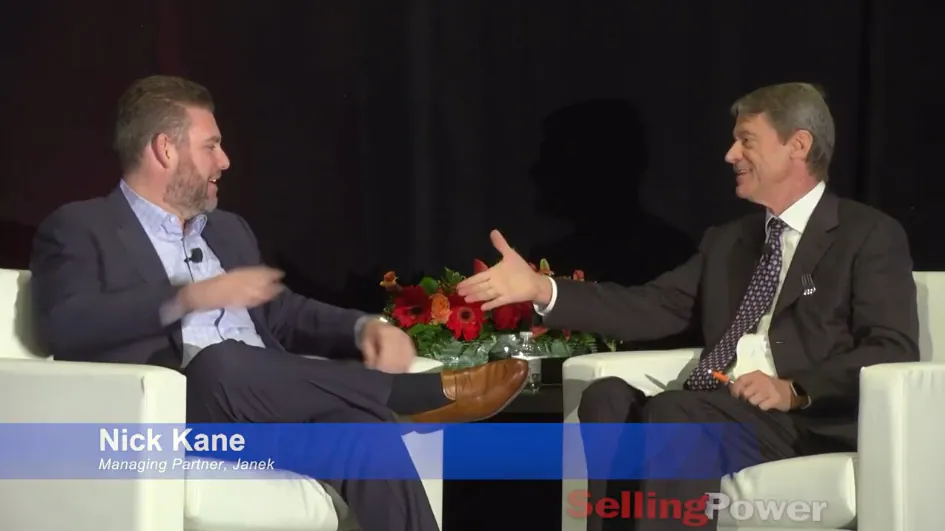How to Improve Sales Enablement Adoption in Your Team

In a previous blog post, we introduced the topic of sales enablement – what it is and how the various areas that it covers can help your team become successful. But it’s one thing to know what sales enablement is. It’s another thing entirely to create buy-in and have your team adopt the sales enablement strategies you’ve provided them. So today we’re going to be discussing how you can increase the sales enablement adoption rate in your team.
Like the other post, it will probably be helpful to talk about each of the three primary areas – technology, marketing content, and information and knowledge – in turn, going over the strategies and tactics to ensure that they’re being utilized more often.
Technology
The first phase of enhancing adoption in your sales team in the area of technology happens even before said tech is implemented. In fact, it starts when you’re doing the research and discovery phase for the sales enablement technology you plan to institute.
When you’re making the decision to upgrade your sales enablement capabilities with technology, you and the rest of sales leadership need to ask, “What gaps or issues are we and our teams experiencing with the sales process, workflow, etc.?”. “What technology allows us to best address those issues in a way that makes sense for our process, target markets, industry, etc.?”.
Once you’ve answered all those initial questions, then you can begin the research for the technology that best meets those needs – whether it’s upgrading to a more robust CRM than you presently have, utilizing an auto-dialer to increase the number of calls by your remote sales reps, or something else.
It’s important to remember that your primary concern in this research and discovery phase is finding the right vendor/supplier that is able to fill in the gaps and solve the issues that you’ve identified. Far too often, we see organizations fixated on budget and price as the first consideration. That can lead to problems and a solution that you’ll ultimately not happy with – which means you’ll need to start this process all over again.
In discovery and conversations with those vendors, be sure to mention the needs and issues you’ve identified and ask deep, penetrating questions about how their solutions specifically address those problems. You might also want to consider having your sales reps review a few of those conversations – it allows them to see how things look from the other side of the table: your organization as the buyer. Seeing this opposite perspective could very well help improve their own sales skills.
Once you’ve selected your option, make sure you go through a ramp-up and onboarding process prior to the technology implementation – just as you would for a sales training event. Particularly if you have technology-shy sales reps, it’s crucial to create buy-in from the team at this stage and get them excited about the forthcoming sales enablement. Specifically, you’ll want to communicate what this technology is and how it will assist them in becoming more effective, productive, and happier sales professionals.
Naturally, there will be training delivered on the technology as it’s or when it’s implemented. What form this will take depends on the solution and its complexities, but it’s the first step to getting familiar and comfortable with the new tech. But be sure to include it – if possible, having a multi-phase series of training would be best, so they can gradually absorb the information.
Just as we emphasize the importance of reinforcement for sales training, so too should there be reinforcement on any sales enablement technology you introduce. Whether it’s gamification (such as our own Xpert for sales training), coaching meetings that involve addressing issues that come up, reference handouts/PDFs, or some combination (which will be most likely), be sure to have it.
It’s also vital that you have a point of contact for trouble-shooting issues that come up. And they almost certainly will. As school districts across the country discovered last spring when they went virtual, and as wholly virtual and blended districts have found out this fall, no tech rollout ever goes completely smoothly. So in your discussions with vendors, make the post-implementation support another key area of focus – is it offered? What are the hours that’s it’s offered? What’s the turnaround time for support issues/tickets? It’s another factor to take into consideration when deciding your solution. For example, if you’re a small to medium local or regional business and your vendor is in the same time zone, 9 to 5 support might very well work out for you. On the other hand, if you’re an MNC that operates across multiple time zones, you’ll want a vendor who can offer 24/7 support.
Another important aspect of increasing sales enablement technology adoption rate is patience. Because there will be hiccups in the early stages, maintain patience and calm when and if your sales reps are having problems with the technology. Being short with them because they’re not grasping what you think should be obvious, or trashing the technology for a problem that’s come up will both dampen enthusiasm and lower adoption. By contrast, keeping a sense of equilibrium and a positive outlook will have your sales reps also willing to roll with the punches.
Marketing Content
As we mentioned in our introductory blog on sales enablement, the best marketing content is created when marketing and sales collaborate on the crafting on collateral and are in alignment. If they’re siloed within your organization, you’ll need to shift your mindset in this particular instance for the purposes of creating the best material possible.
This raises the natural question of best practices in fostering that culture of collaboration and alignment. Meetings are the first clear starting point. But work should be done before any meeting – on the sales side specifically, have the team answer at least the following questions:
- What problems or goals are you seeing consistently come up with your buyers?
- Which communication style is most predominant among your buyers?
- What language or verbiage is most present in each of your target markets?
- How different are your target markets from each other in terms of Questions 1 and 2?
- Of the current collateral and content, which pieces are most effective, and what parts of those pieces resonate most with your buyers?
The first two questions give marketing a general sense of targeting and messaging areas. The second two questions aid in helping create a more tightly targeted and focused message and an idea of how many different types of collateral are created. For example, say one of your target markets is banking institutions and another of your target markets is telecommunications companies. Both of those markets are going to be distinct enough from each other in their language and what they’re looking for that it makes sense to create wholly separate material for each market.
The old saying, “No need to reinvent the wheel,” is a good indicator of what the last question is about. You don’t necessarily have to create whole-cloth new content. There might well be things from your existing content that can be repurposed into new content; just perhaps slightly tweaked or re-worded to better resonate with the target buyers.
Then, once this collaboration is complete and marketing crafts the collateral, it might be worth getting feedback from sales on the draft – perhaps there’s some suggestions for revisions that can create even better material.
After the material is finalized, it should be kept in a repository (virtual, hard copy, or both) that sales reps can easily access and distribute to buyers in their pipeline. Whether it’s blogs, slide decks, brochures, fliers, or other content types – ease of accessibility and distribution are both essential to adoption and usage of the content.
But the work doesn’t end there. Nothing in sales ever stays static. Depending on the velocity of your sales cycle, the two departments should meet periodically – say every quarter or two – to discuss how the content is being received and what adjustments can and should be made, if any.
Knowledge and Information
With knowledge and information, you’re going to follow the same basic process as you do with technology – identify where knowledge and skill gaps/problems are evident; conduct an extensive, thorough deep dive into vendors and suppliers (including internal ones if that’s a resource you have available; ramping up and creating sales team buy-in; delivery of training – including sales training; and reinforcement through an array of strategies to ensure the learned skills and knowledge translates into desired behavioral changes.
That said, there are considerable differences that apply to knowledge and information that don’t necessarily correlate to technology. Whereas the sales enablement tech you bring into the organization applies to all your sales reps, knowledge and information is a multi-level category. Sometimes it will involve the whole sales team; other times it will involve deficits of individual sales reps. Which applies when depends on how widespread the gap is and whether it’s wholly new or a refresher.
If it’s wholly new, then training and reinforcement will be the remedy. If it’s pre-existing knowledge and skills that have fallen into disuse or inconsistent application, then reinforcement and coaching will be the pathways to restore full-fledged enablement of the knowledge and information.
Another key distinction: Technological enablement will occur much less frequently – perhaps once a year or every few years at most for the majority of organizations. Knowledge and information is constantly ongoing and never ends. As a sales manager or leader, it’s one of your most fundamental duties – to develop and enhance the skills, knowledge and information of your sales reps.
As for creating buy-in other than in the ways we’ve described above: for sales training events or other team-wide efforts, solicit the input of the most tenured and A-level reps and design the curriculum so that they can see the applicability and relevance to their already successful bank of knowledge and skills. Once you’ve gotten their buy-in, they can help serve as ambassadors who transmit enthusiasm to mid-level and junior sales reps, the group that will most likely more easily see the benefits of the training.
For individual sales reps, factor in their preferred communication style and their motivations for being in sales. Those two points will allow you to present the information and knowledge in a way that generates enthusiasm for the cerebral enablement and increase the likelihood of adoption. For example, explain it in their communication style and demonstrate how having this new knowledge will make them even more successful at fulfilling their sales motivations and goals.
The process of sales enablement is often long, complex, and involved. It also necessitates a lot of prep work before the enablement solution is even established or introduced into the organization. But identifying those solutions that most fit your needs and objectives, devising a plan for implementation, and crafting a reinforcement strategy – no matter what area of enablement you’re looking at – will foster a culture of buy-in on your sales teams and greatly improve your adoption rate.

- Account Planning (11)
- Awards (50)
- Client Testimonial (37)
- Personal Branding (19)
- Podcast (11)
- Research (68)
- Sales Career Development (85)
- Sales Coaching (154)
- Sales Consulting (133)
- Sales Culture (164)
- Sales Enablement (340)
- Sales Leadership (108)
- Sales Management (242)
- Sales Negotiation (16)
- Sales Prospecting (124)
- Sales Role-Playing (18)
- Sales Training (229)
- Selling Strategies (255)
- Soft Skills (67)
- Talent Management (92)
- Trusted Advisor (27)
- Virtual Selling (41)
- Webinar (10)





























